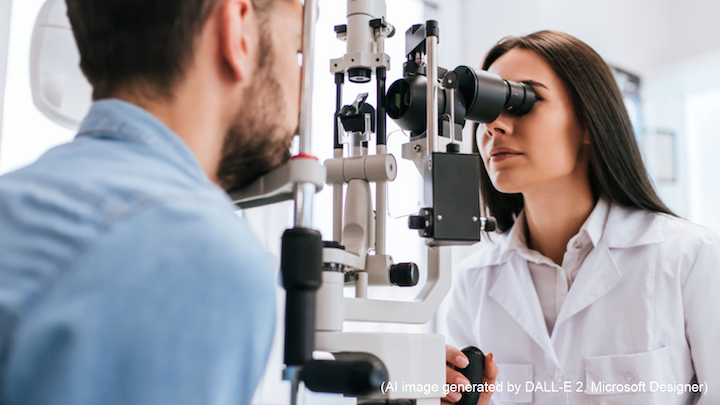#0052 COVID-19 and ophthalmology: An environmental work hazard

Keeping an Eye on the Occupational Hazards of Covid-19 in Ophthalmology
Conjunctival congestion or conjunctivitis can be a symptom of Covid-19. It was prevalent in 0.8% (1,099) of the initial cases confirmed in China. The SARS-CoV-2 virus has also been found in the secretions of patients with conjunctivitis. This is of great concern to ophthalmologists, who routinely come in close contact with patients and must be wary of the increased occupational risk of ocular transmission. It is a little-known fact that Dr. Li Wenliang, who first alerted Chinese officials regarding Covid-19, was a young ophthalmologist who succumbed to respiratory failure a month after exposure to a conjunctivitis patient with Covid-19.
Ophthalmologists know that many systemic viral infections have ocular manifestations. Tears and ocular secretions may contain highly contagious pathogens like the human immunodeficiency virus or hepatitis C. The human coronavirus NL63 (HCoV-NL63), too, was first observed in a 7-month old child from the Netherlands who had conjunctivitis and bronchitis. Hence, it is possible that patients visiting ophthalmologists are already infected by the SARS-CoV-2 virus.
Although research is lacking on whether SARS-CoV-2 is present in convalescent patients or whether tears are infectious, it is probably best if the ophthalmologists take precautionary measures to reduce the risk of occupational hazards.
For instance, ophthalmologists could wear “M3G” protective equipment (mask, gown, gloves, and goggles), especially when examining two particular groups of patients: those who show symptoms of upper respiratory infection, and those who recently travelled to a high-risk area or were in contact with people with confirmed Covid-19. They could use alcohol-based sanitizers and wash their hands regularly to maintain hand hygiene. They could also use sterile cotton tip applicators while manipulating eyelids and ocular tissues in routine practice.
Additionally, ophthalmologists could adopt screening measures before meetings with patients. For instance, two hospitals in Hong Kong used infrared thermometers to screen all patients at the entrance. They used questionnaires to gather information on their patients’ occupations and recent travel histories. Patients were also screened for symptoms of respiratory infection or acute conjunctivitis. Appointments that were deemed risky after these investigations were postponed by at least 14 days. All non-urgent appointments were also postponed as a precautionary measure.
“Social distancing” is not an option for ophthalmologists, who, by nature of their practice, must come in close contact with their patients. Hence, they must do all they can to counter the risks of occupational hazards to prevent them from becoming lethal and to save as many lives as possible.

Link to the original journal article:
https://onlinelibrary.wiley.com/doi/10.1002/1348-9585.12124
Title of the paper:
COVID-19 and ophthalmology: An environmental work hazard
Authors:
Irene C. Kuo and Terrence P. O’Brien




